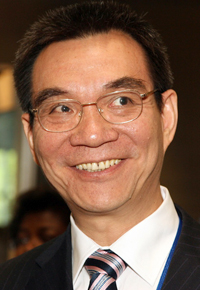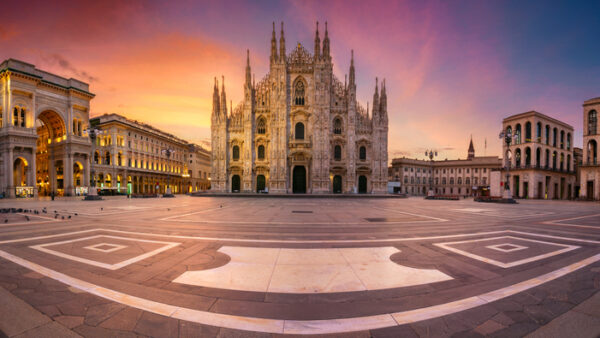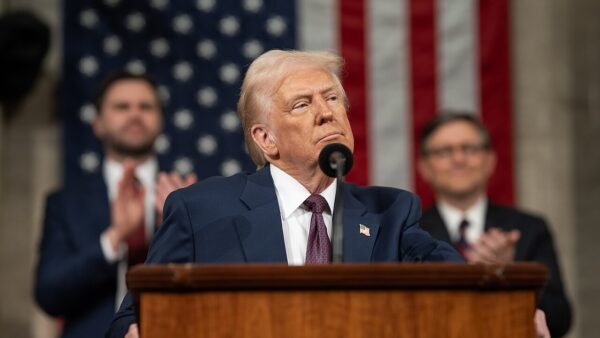Countries in the West could kickstart their flatlining economies by investing in the developing world’s infrastructure, former World Bank chief economist tells Rod Sweet.
In 1919 a young Dwight D Eisenhower drove from Washington DC to California in a US Army convoy. It took nearly two months.
Returning, he complained that trucks got stuck in bogs and some bridges were so rickety the convoy itself finished them off.
So when, as president, he pushed for the Federal-Aid Highway Act of 1956, he knew what he was talking about when he said its impact on the American economy would be “beyond calculation”.
Professor Justin Yifu Lin likes this story because it reminds us that the most advanced economy in the world was, not that long ago, a bit like some developing countries today.
And he believes that decent infrastructure will have the same transformative power in developing countries as it had in the US.
In an interview with GCR, Prof Lin, chief economist and senior vice president of the World Bank from 2008 to 2012, said it was in the developed world’s keen interest to invest in infrastructure in the developing world because it will spark profound economic growth there, particularly in Africa.
This in turn will create the markets that the developed world desperately needs to sell its goods and services.
Prof Lin used his tenure at the World Bank to promote the idea of a “global infrastructure initiative”. Now professor and honorary dean at the National School of Development at Peking University, he’s still doing it.
GCR caught up with him as he was returning from a tour of Tanzania, Rwanda and Ethiopia.

Prof Justin Yifu Lin
“I was quite encouraged,” he said. “They are at the same stage as China was in the early 1980s. They have a lot of opportunities for manufacturing sector development, and also there is now a window of opportunity in the global economy.”
One pane in that window, he said, is the profound stagnation in Japan and the developed West.
The classic IMF response would be deep structural reform coupled with a devaluation of currencies to encourage exports. But the governments can’t take this bitter pill because it would be political suicide.
“So it’s a deadlock,” says Prof Lin. “Everyone knows the Eurozone, US and Japan all need structural reform to regain competitiveness, but they don’t have a way to create the space for structural reform.
“I think that a global infrastructure initiative can create this kind of space, because infrastructure investment will increase demand and growth opportunities for them. This will have the same impact as a currency devaluation.”
The Ethiopian miracle
Roads, rail, ports, power stations, telecoms – these in themselves won’t create wealth, admits Prof Lin. Background conditions need to be ripe for growth, so that the infrastructure kicks things off and generates a return. “It’s win-win only if trade and manufacturing expand as a result,” he says.
But he believes some African countries are there now, and gives Ethiopia as an example.
“When I was at the World Bank we did a study to compare Ethiopia, Vietnam and China. The wage rate in the light manufacturing sector in Ethiopia was about 20% of the wage rate in China, and 50% of the wage rate in Vietnam. But the level of productivity was about 70% of the productivity in China and about the same as Vietnam.”
In March 2011 Prof Lin visited Ethiopia and urged the late Prime Minister Meles Zenawi go to China and invite shoe manufacturers to come and set up shop. “He followed my hint,” says Prof Lin.
Prime Minister Meles (who died of illness in 2012) went to Shenzhen for the World Universiade university sports tournament in August 2011, and met with shoe manufacturers. In October, Guangdong Province sent a delegation to Ethiopia to investigate.
One firm, manufacturer Huajian, was impressed. Not only was labour cheap, but Ethiopians are big producers of livestock, so raw materials for shoes – leather -Â is plentiful.
That very month Huajian recruited 86 Ethiopian university graduates and sent them for training at Huajian’s factory in China.
Three months later, in January 2012, the company set up two production lines in Ethiopia, employing 600 workers.
“When I went to visit in March 2012,” Prof Lin says, “the firm had already started to export to the US market. By May, it had become the largest exporter in Ethiopia. And by the end of 2012 that firm alone more than doubled the total exports from Ethiopia.
“I went to see them again on this trip,” he says, “and they have now they have increased their employment from 600 to 1,600, and they have a plan to expand their employment to 4,000 by the end of this year, and to 100,000 in the coming years. So that’s a very good example.”
Cycles
The global opportunity Prof Lin sees is also just history repeating itself. In the 1960s, he says, wages in Japan began rising, so Japan relocated labour-intensive manufacturing to relatively backward Korea, Taiwan, Singapore and Hong Kong.
That sparked industrialisation and dynamic economic growth in those economies, and in the 1980s when wages started rising, companies moved their labour-intensive manufacturing businesses to China – and look what happened.
“With 85 million manufacturing workers, China is much larger, but the dynamic is the same,” Prof Lin says. “Wages are rising and China will gradually relocate – first to the hinterland in China, but the scope in China’s hinterland is small. So gradually China will relocate large industries to other countries.”
The obvious place for China to go, Prof Lin believes, is Africa. “They have achieved political and social stability. To a large extent their governments have improved their infrastructure already.
“And they are keen to support manufacturing development because have a growing younger population with improved education. But they need to find jobs for them because otherwise the educated young people will become disillusioned. A labour-intensive manufacturing sector at the moment would be the best way.
“I met with governments in Rwanda, Tanzania and Ethiopia this last time and had the same conversation. They were excited,” he says.
Big returns
China has already invested billions in Africa through bilateral (government-to-government) grants and loans, and is right now building highways, railroads and power stations in many African countries. Often such government-backed investments secure access to the mineral resources China craves.
Nevertheless, there’s a lot getting built. “I was surprised to see Kigali now looks very much like a garden city,” says Prof Lin. “A lot has been done by Chinese firms.”
But that’s just one route for investment. High-income countries could also invest through established multilateral development banks, who have experience in project selection, funding mechanisms and in monitoring corruption.
So if he were head of a large infrastructure firm, what would he do? “We need political involvement,” Prof Lin says. “The head of a firm can contribute to forming a political consensus.”
“The scope for investing in infrastructure inside high-income countries is limited. But in developing countries it’s unlimited. I see infrastructure bottlenecks everywhere. In Dar es Salaam [Tanzania] I understand cargo ships can wait a month before being unloaded. Blackouts may occur daily. And even small investments can generate a high return in those countries.”
For instance, in landlocked Ethiopia, he says there is a plan to build a toll road from the capital Addis Ababa to the nearest port, in neighbouring Djibouti. It would be Ethiopia’s first toll road.
“If it is successful, it will be an incentive,” he says. “It will increase the private sector’s involvement.”
Final question: if high-income countries invest and the developing world’s economies take off, won’t they just import from where goods are made most cheaply – countries like China?
For a former World Bank chief economist, Prof Lin is very patient. He explains that there are plenty of tradable goods a dynamically growing Africa would want from high-income countries – not least, in the shorter term, construction-related equipment, materials and services.
He also recalls economist and Nobel laureate Michael Spence, who argued that the secret of Germany’s economic success since 2000 – and its comparative resilience in the great recession -Â has been its ability to restructure and tap into dynamic economic growth in China.
“China will export some, but it’s a globally interconnected world,” he says. “If China’s exports increase, its imports increase. When China grows it imports more goods from the developed countries.”






